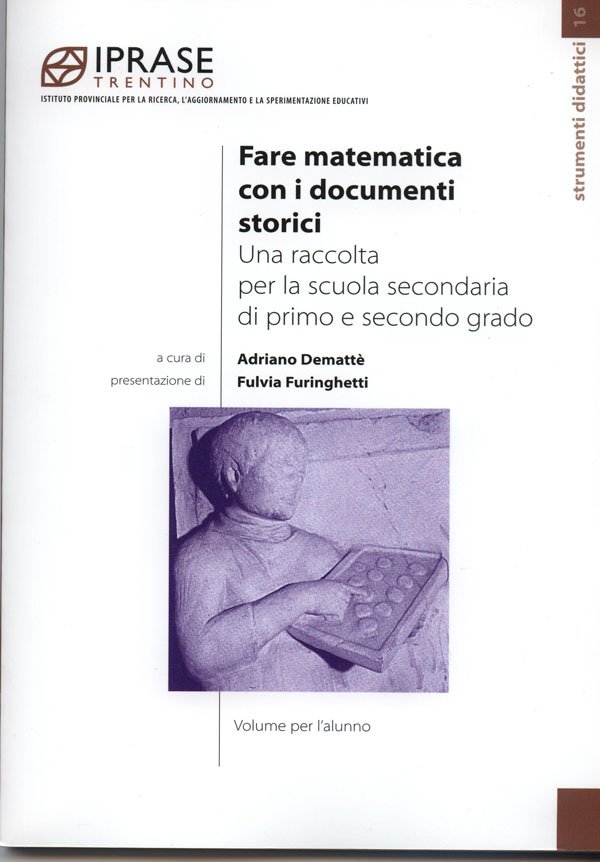- About MAA
- Membership
- MAA Publications
- Periodicals
- Blogs
- MAA Book Series
- MAA Press (an imprint of the AMS)
- MAA Notes
- MAA Reviews
- Mathematical Communication
- Information for Libraries
- Author Resources
- Advertise with MAA
- Meetings
- Competitions
- Programs
- Communities
- MAA Sections
- SIGMAA
- MAA Connect
- Students
- MAA Awards
- Awards Booklets
- Writing Awards
- Teaching Awards
- Service Awards
- Research Awards
- Lecture Awards
- Putnam Competition Individual and Team Winners
- D. E. Shaw Group AMC 8 Awards & Certificates
- Maryam Mirzakhani AMC 10 A Awards & Certificates
- Two Sigma AMC 10 B Awards & Certificates
- Jane Street AMC 12 A Awards & Certificates
- Akamai AMC 12 B Awards & Certificates
- High School Teachers
- News
You are here
Introducing the History of Mathematics: An Italian Experience Using Original Documents
Editor's note: This article was published in August 2008.
Many Italian mathematics teachers are interested in the history of mathematics but very few use it in their classrooms. Why is this? In our opinion, they consider the history of mathematics to be merely a “beautiful story” but don’t have time in their classrooms for stories. They must concentrate on improving their students’ mathematical skills and understanding. The history of mathematics offers many opportunities for doing mathematics and improving student problem solving skills. Unfortunately, our teachers rarely have the didactical resources to utilize these kinds of activities.
In order to remedy this situation, a collaborative effort to produce suitable materials was established between GREMG, Department of Mathematics, the University of Genoa and IPRASE, Trento, [Provincial Education Research Institute, Trento.] I led a team of consultants and writers including five in-service teachers on this task. Much assistance and encouragement was provided by Prof. Fulvia Furinghetti, Department of Mathematics, University of Genoa. Our goal was to produce a set of historical based activities that could be included into daily classroom instruction. Their integration into the curriculum is intended to promote alternate ways of teaching based on working with historical excerpts and exercises chosen to reinforce (or sometimes even introduce) mathematical competencies.
A two year cooperative effort resulted in the publication of the book: Fare mathematica con i documenti storici. [Doing mathematics with historical documents], 2006, pp168, Adriano Demantté, editor.

A companion text, Volumi per gli insegnanti [Volume for Teachers], provides teaching suggestions, answer keys, topics for further study and bibliography. The student text is comprised of selected documents chosen to expose the work of many important historical authors and also to consider less famous mathematicians whose works were representative of their times. Important Italian secondary school topics are considered. Questions and activities follow after every document. Their role is to focus student attention to the main points in the original document, involving her/him in an active way. The “doing of mathematics” is stressed. Some questions led to further exercises and problems, using different examples or recalling themes in mathematics textbooks. Sometimes students are required to conjecture about the causes of certain historical developments. Teachers using these books can find topics for student discussion and further explorations in mathematics.
Adriano Dematte (Univ. of Genoa), "Introducing the History of Mathematics: An Italian Experience Using Original Documents," Convergence (February 2010), DOI:10.4169/loci002856





